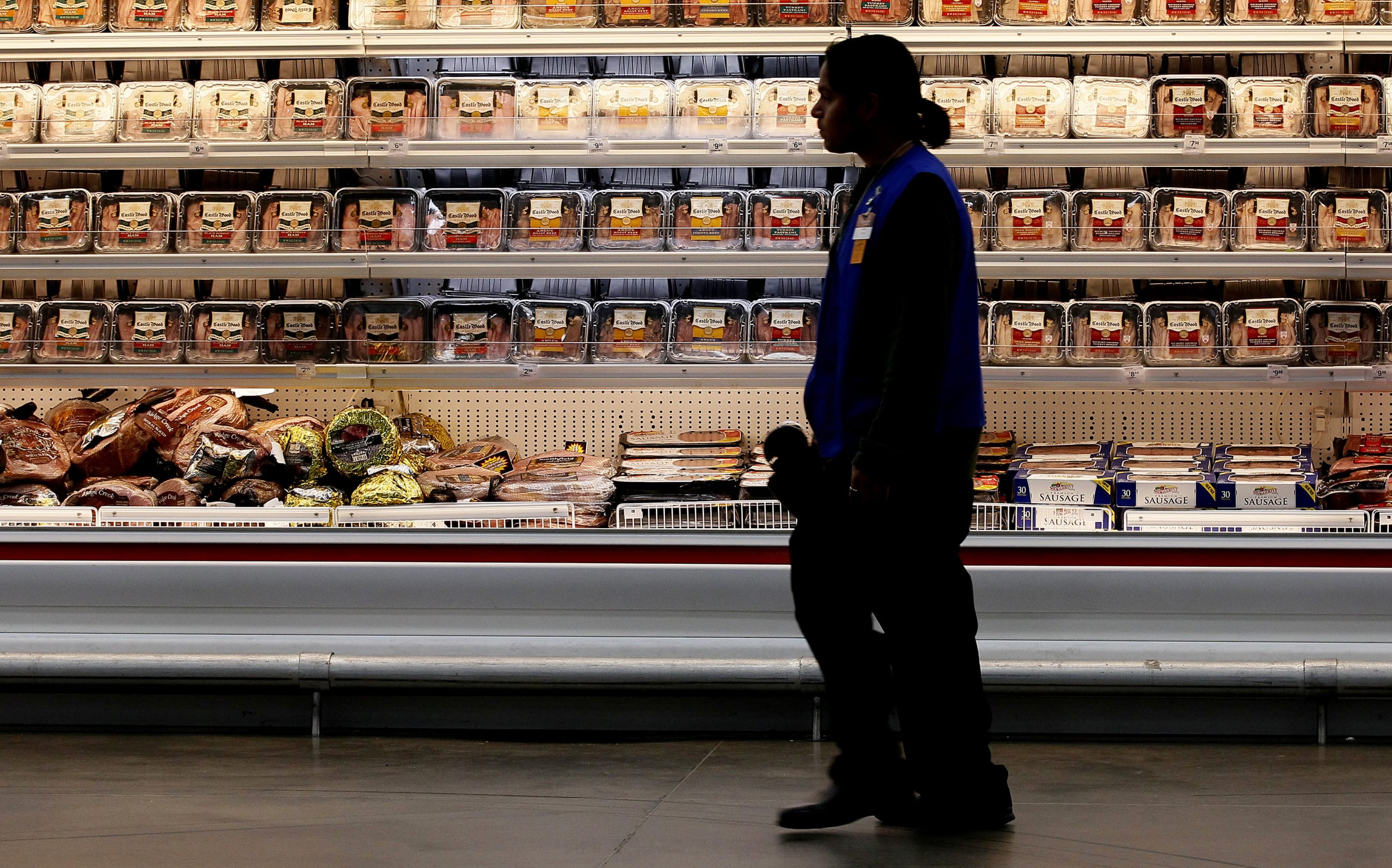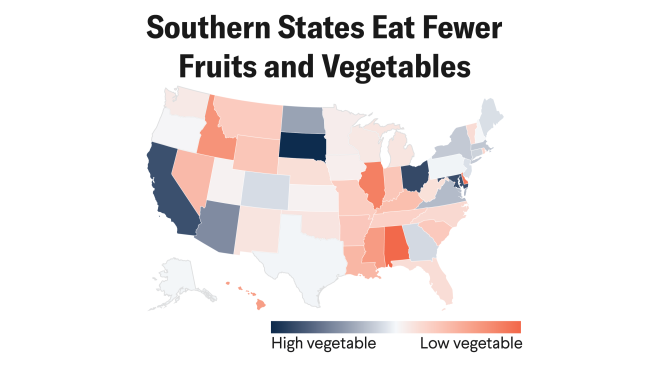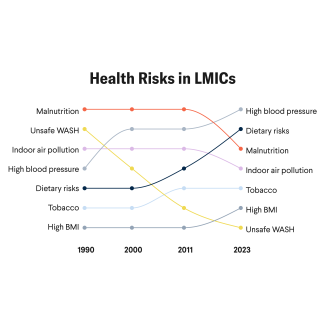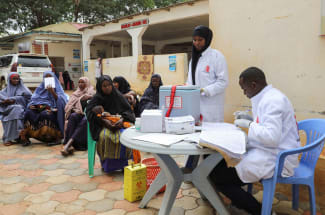A healthy diet consists of eating nutritious foods such as fruits, vegetables, and whole grains while avoiding or minimizing harmful foods to prevent both malnutrition in all its forms and noncommunicable diseases including diabetes, heart disease, stroke, and cancer.
Although the health risks associated with harmful foods are well established, the magnitude of the risk is less clear. A new study from the Institute for Health Metrics and Evaluation (IHME) attempts to quantify, on a global level, how much chronic disease could be prevented by shunning three unhealthy foods: processed meat, sugar-sweetened beverages (SSBs), and industrial trans fats.
Published June 30 in Nature Medicine, the study uses a burden-of-proof approach to convey a star-rating system that indicates the strength of evidence between a particular medical condition and these three types of food. The analysis found that regular consumption of processed meat, sugary drinks, and trans fats is associated with a dose-response increase in major health conditions, including type 2 diabetes, ischemic heart disease (IHD), and colorectal cancer.
Regular consumption, even in small amounts, might not be safe: According to the study, the risk curve was steepest at exposure levels approximately equivalent to one serving or less for each dietary risk factor investigated. All of the risk-outcome relationships, except for processed meat and IHD, received two-star ratings, which are defined as weak within the burden of proof framework. The study calls for further research to strengthen evidence, reduce uncertainty, and establish a more consistent body of work on harmful foods.
According to estimates from IHME's Global Burden of Disease Study, in 2021 globally, diets high in processed meat were linked to nearly 300,000 deaths and more than 10 million disability-adjusted life years (DALYs), which represent years lost due to ill-health, disability, or early death. Diets high in sugar-sweetened beverages contributed to 3.6 million DALYs; trans-fat consumption accounted for 2.5 million.
These burdens are not evenly distributed across countries. Even though trans-fat burden is declining overall in response to bans implemented in several countries, the burden attributed to processed meat and sugary beverages is increasing in each of the World Bank regions, showing substantial heterogeneity between the regions among the adult population age 25 and older.
For example, in 2021 the highest rate of burden attributable to processed meat is estimated to be in North America (approximately 911 DALYs per 100,000 people) and the lowest in south Asia (approximately 91 DALYs per 100,000). In 2021, the highest burden of DALYs attributed to SSBs was in North America (approximately 244 per 100,000), and the lowest in sub-Saharan Africa (36 per 100,000). Without targeted and sustained interventions, these trends will worsen health outcomes globally.
Processed Meats: No Clear Safe Level for Daily Consumption
Processed meat—including preserved beef, pork, and poultry—remains common in diets worldwide because of its convenience and protein richness. However, evidence increasingly shows adverse health risks associated with the daily consumption of processed meat.
IHME's analysis estimates that a daily intake of 50 grams (1.8 ounces) of processed meat, equivalent to a standard hot dog, elevates the risk for type 2 diabetes by 30% and colorectal cancer by 26% relative to no consumption.
The study also provided a conservative risk assessment for the most commonly observed consumption levels. Daily consumption of 0.6 to 57 grams (0.02 to 2 ounces) of processed meat elevates the risk of type 2 diabetes by 11%; daily consumption of 0.78 to 55 grams (0.03 to 1.9 ounces) corresponds with a 7% increase in colorectal cancer risk, compared to diets without these foods. These risks appeared to increase steadily with higher intake. The researchers did not observe a threshold below which consumption was clearly safe.
Several Latin American countries—among them Brazil, Chile, Peru, and Uruguay—have implemented front-of-package nutrient‑based warning labels on ultra‑processed foods (including processed meats when they exceed thresholds for sodium, sugar, or saturated fats). Countries such as Chile and Peru also impose restrictions on advertising, particularly toward children, for products carrying these warning labels. In one analysis of the Chilean front-of-package warning labels that compared food purchases before and after the labels went into effect, sodium content in the diet decreased by 27.7 milligram per capita per day.
Despite the promising results from these labels, their implementation has primarily been limited to Latin America.
Sugary Drinks: Driving Diabetes and Heart Disease
Beverages such as sodas and sports drinks are the leading sources of added sugar in several countries. In the United States, SSBs contribute more than 40% of added sugar [PDF]. In Sweden, they contribute 34% to added sugar intake, which accounts for 4.4% of total energy intake among consumers. In Mexico, SSBs contribute 69% of added sugar. These sugar-sweetened drinks are often consumed in large quantities, the most common serving size being 12 ounces, which contains 35 to 37.5 grams (1.2 to 1.3 ounces) of sugar per serving. Aggressive marketing campaigns and the widespread availability of sugary drinks also drive consumption. Unlike many other foods, sugary beverages are typically consumed without satiety, meaning they add calories without decreasing hunger.
Without targeted and sustained interventions, these trends will worsen health outcomes globally
In their analysis, researchers showed that consuming 250 grams daily (about 8.8 ounces) of sugar-sweetened beverages is associated with a 20% increased risk of type 2 diabetes and a 7% increased risk of IHD, respectively. The conservative risk assessment—using the most commonly observed consumption levels from the studies included in the meta-analysis—indicates that consuming 1.5 to 390 grams (0.05 to 13.8 ounces) daily is associated with at least an 8% average increase in type 2 diabetes risk. Similarly, consuming up to 365 grams (12.9 ounces) per day is associated with a minimum 2% increased risk of ischemic heart diseases.
A recent study showed that global intake of SSBs increased by 16% from 1990 to 2018, the largest increase observed in sub-Saharan Africa (approximately 82%). The study also reported that Latin America and the Caribbean have the highest average intake of sugar-sweetened beverages and highlights the rise of sugary drink consumption in many low- or middle-income countries, where diseases driven by SSBs will likely continue to escalate.
Studies have shown adding taxes on SSBs has succeeded in reducing SSB purchase and consumption. Chile implemented a multipronged policy approach in 2016, in which front-of-package warning labels, restrictions to child-directed marketing, and regulating the school food environment with bans on SSBs and other ultra-processed foods. Analysis of before and after policy implementation indicates a significant reduction in SSB consumption post regulation.
Trans Fats: Substantial Progress, but Not Yet Complete
Industrial trans fatty acids (TFAs) are produced by converting vegetable oil from a liquid to a solid through hydrogenation. These inexpensive and shelf-stable fats are present in many processed foods such as doughnuts, cookies, pastries, fried foods, and chips.
Trans-fat consumption is measured relative to its contribution to total energy intake. The IHME study calculated the mean risk for each level of trans-fat consumption, as measured by the percentage of daily energy intake. When trans-fat consumption is at 1% of daily energy intake, the risk of IHD increases by 11%. The researchers calculated a conservative average risk for the most common consumption levels of trans fat, which ranges between 0.25% and 2.56% of daily energy; this is associated with at least a 3% increase in the risk of IHD.
These findings support the World Health Organization (WHO)'s efforts to eliminate industrial trans fats globally. The WHO recommends implementing mandatory bans on the production and use of partially hydrogenated oils as ingredients in all foods.
To achieve this goal, the WHO developed the REPLACE action package, which provides guidance for designing and implementing policies to eliminate industrially produced TFAs from the global food supply. Although the ambitious target to eradicate industrial trans fats by the end of 2023 was not fully realized, significant progress has been made. More than half of the world's population now benefits from the WHO's policies. At of the end of 2023, WHO-recommended policies were in effect in 53 countries, covering 3.7 billion people—or 46% of the global population—relative to just 6% five years earlier.
Limitations and Next Steps
The studies included in the analyses relied on self-reported dietary data, which can be prone to memory lapses and inaccuracies, most which were assessed at baseline only. Although the analysis applied the burden of proof method to account for study related biases and correct them, it cannot entirely eliminate these issues. Overall, the findings of the study are consistent with previous research and align with dietary recommendations from major public health organizations, such as the U.S. Centers for Disease Control and Prevention and the WHO.
Policy interventions that can help shape healthier food environments should be promoted using a variety of strategies. For sugar-sweetened beverages, taxes have already shown measurable success in countries such as Mexico and South Africa. Regulations to food marketing, especially those directed at children, is also a promising policy intervention that shows some documented success, such as in the context of Chile. Front-of-package nutrient warnings, as implemented in Chile, Mexico, Peru, and Uruguay, among other countries, can help curb consumption of SSBs, processed meats, and trans fats.
Schools, hospitals, and government programs should enact public procurement standards that ensure healthier foods. Countries should enforce trans-fat bans as outlined in the WHO's REPLACE package and establish the regulatory infrastructure—including legislation, laboratory testing, monitoring, and enforcement capacity—tailored to each country's context and necessary to implement the ban effectively.

EDITOR'S NOTE: All statements and views expressed in this article are solely those of the author and are not necessarily shared by their institution.












